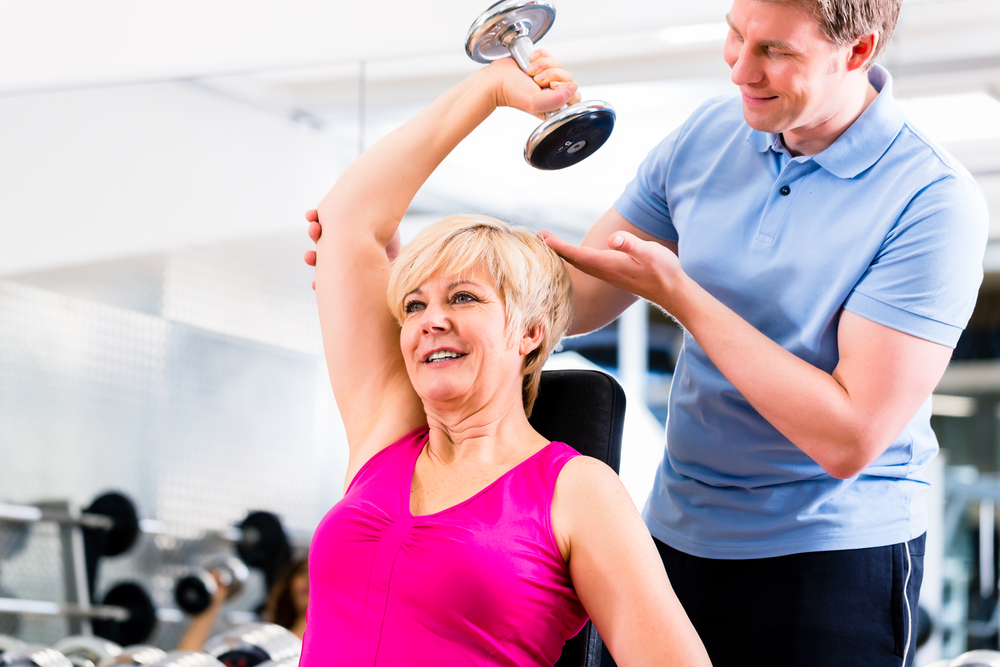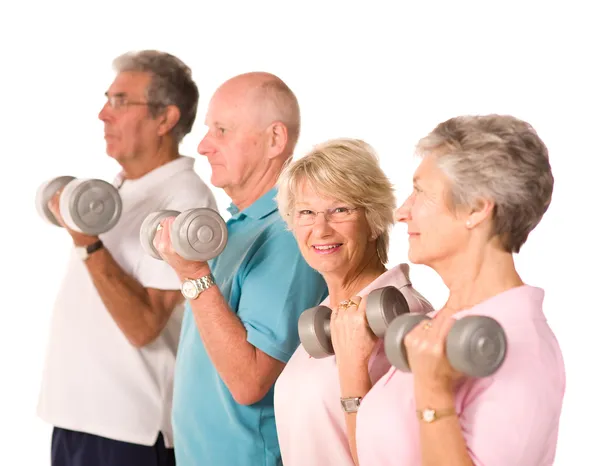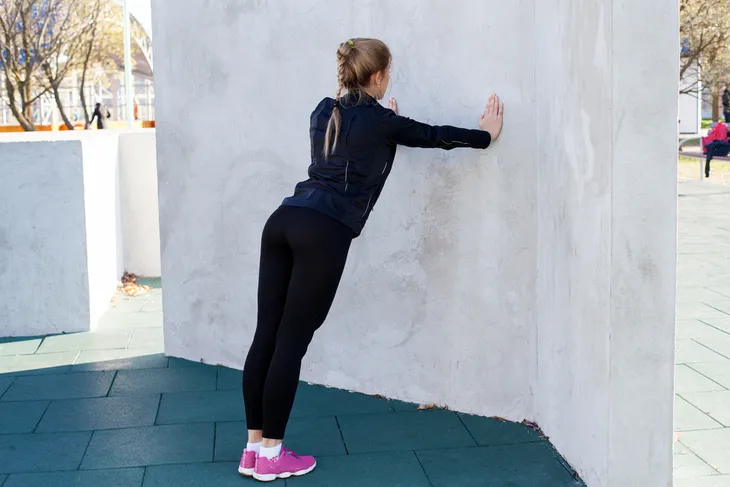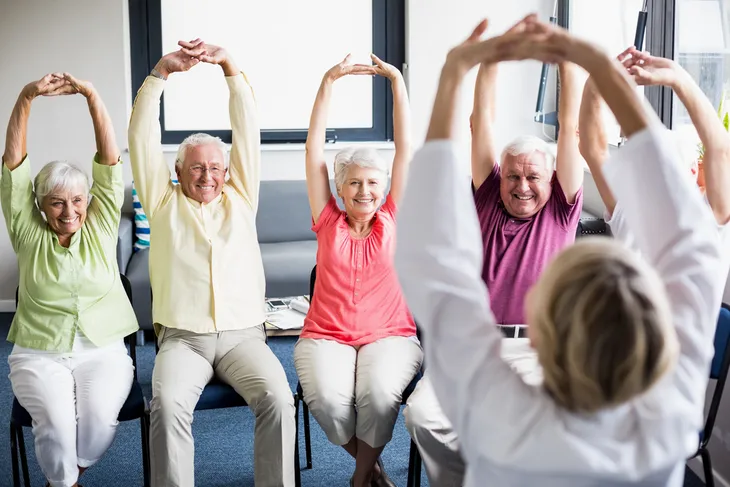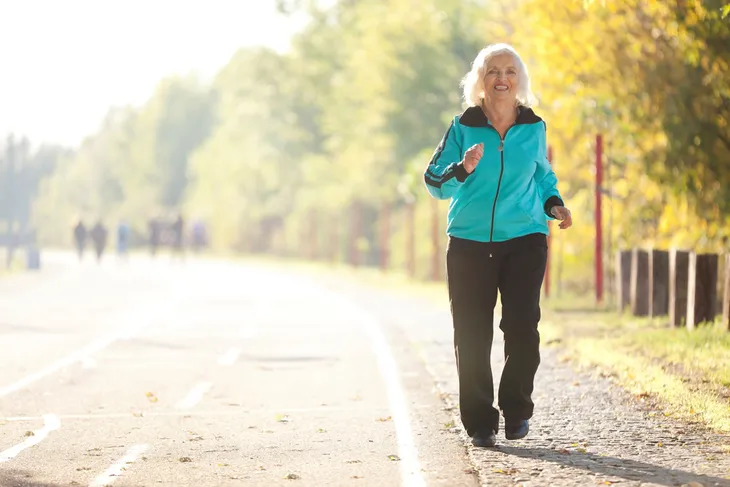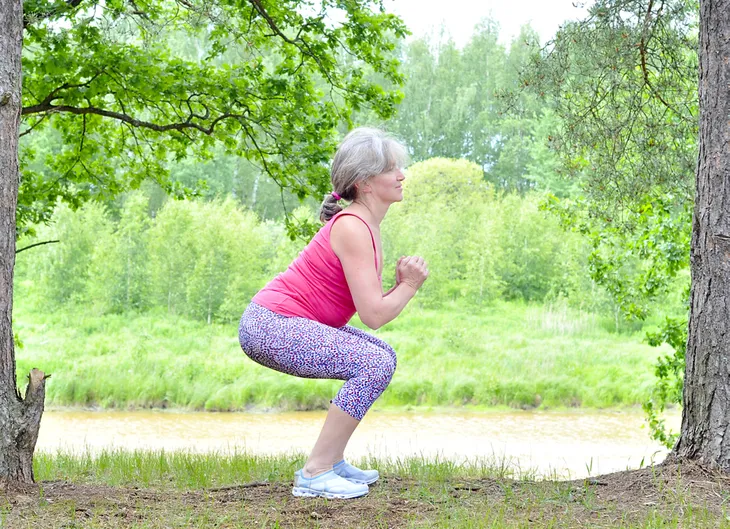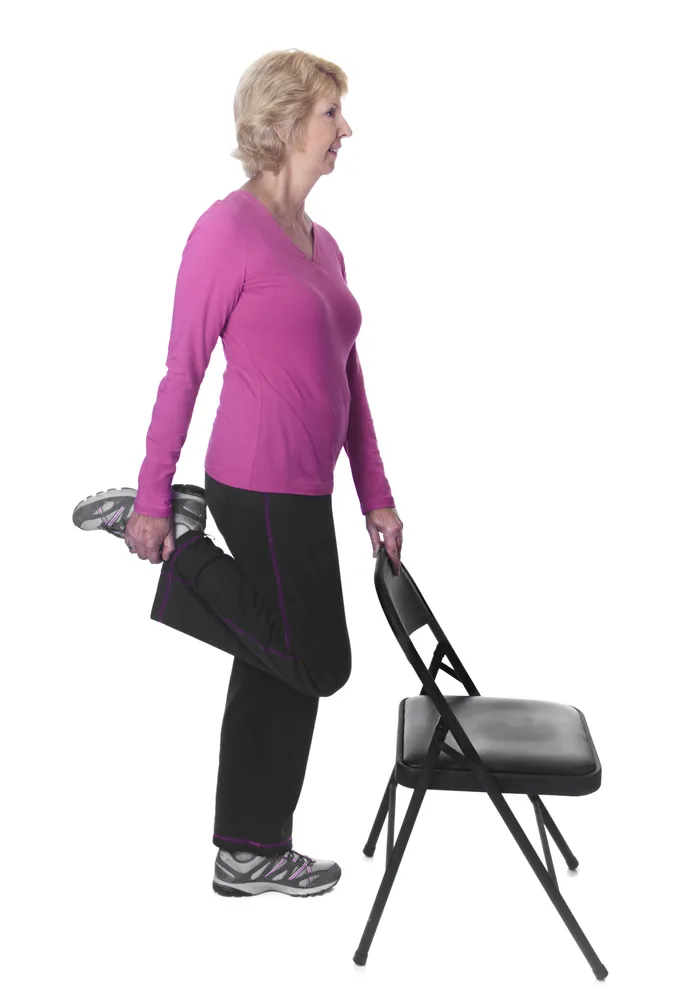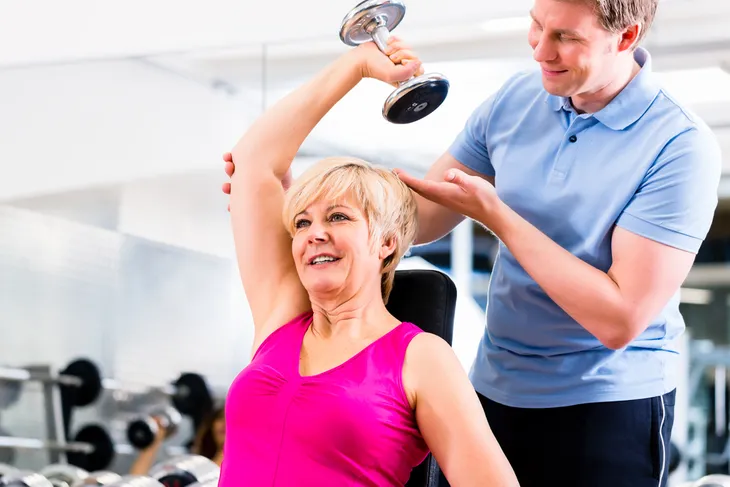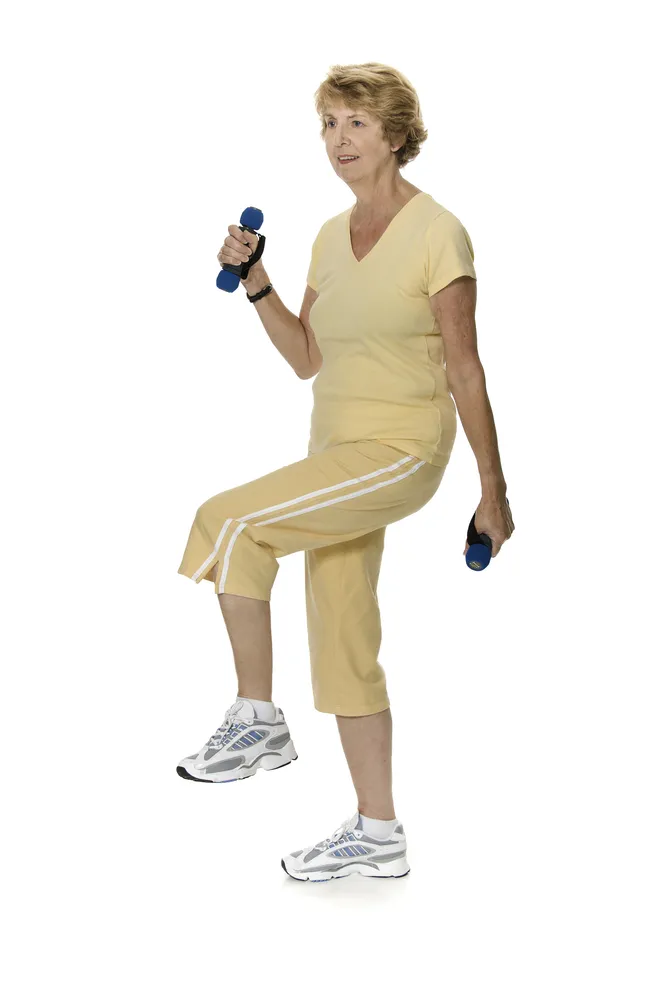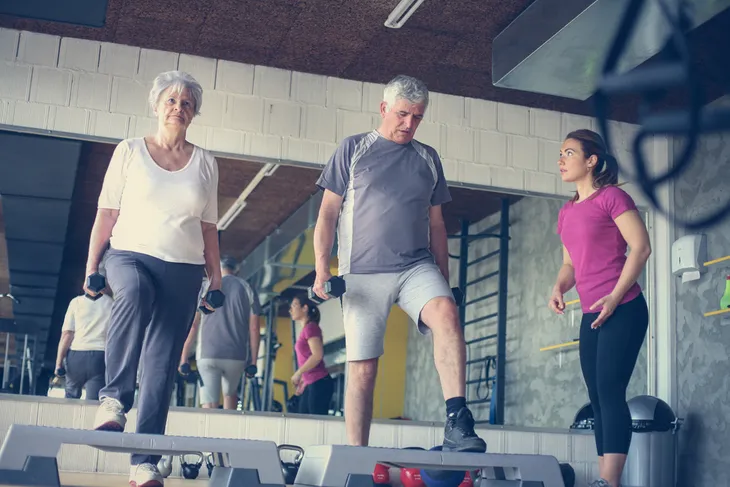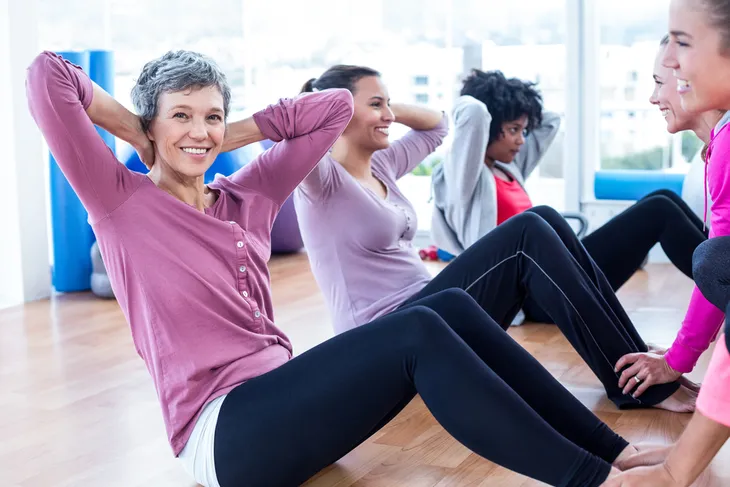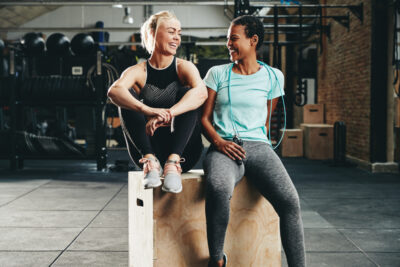Staying active is one of the best things you can do to keep yourself feeling younger, and although you might not be bench pressing 200-pounds like you use to, or going end to end in a grueling soccer match, you can still get plenty of exercise in a healthy way well into your senior years.
Exercises don’t need to be complicated – in fact, most of the upcoming examples could be done while watching TV without the aid of exercise equipment. Those aged 65-and older should get 150-minutes of moderate intensity aerobic activity per week – so here are 12 easy but effective exercises for people in their golden years…
Want senior content delivered straight to your inbox? Sign up for our exclusive email list and receive articles and news on diet & nutrition, fitness, and mental health dedicated specifically to our senior audience!
Bicep Curls
Who doesn’t love a well-defined bicep? Bicep curls are part of a healthy exercise routine, and the Centers for Disease Control and Prevention says seniors should incorporate strength-training workouts at least two times per week.
Start out with 1 or 2-pound weights, with 10 to 15-reps of bicep curls along with other variations such as triceps extensions (more on those later).
Wall Push-Ups
Proper push-ups can be difficult for even younger adults that are in good shape, so here’s a slightly easier version that may be easier on your joints. Healthline says “modified” push-ups against a wall are a good way for seniors to build strength.
To do these wall push ups, stand facing a wall with your toes 12 to 18-inches from it. Then lean forward slightly and place your palms flat against the wall at shoulder height. Carefully ease yourself toward the wall by bending at the elbows, trying to get your nose as close to the wall as you can (don’t strain). Gently push yourself back to the starting position, says the source. Try 10-reps of this one, it adds.
Arm Raises
Put your hands in the air for exercise! EveryDay Health says that raising your arms can help build upper body strength in a non-strenuous way using lighter weights or elastic bands for a bit more resistance.
The source says to sit or stand with your feet flat on the floor, and hold the weights at shoulder height. With your palms facing forward, carefully lift the weights over your head. You can also try other variations including raising the weights from your sides, or holding the weights at your sides and raising them upward (front arm raises.) Try to complete at least 2-sets of 10-reps for these exercises, it adds.
Toe Stands With Chair
This one involves a bit of an assistant – a chair, which shouldn’t be too hard to find. EveryDay Health says this particular exercise can help reduce the risk of falls by improving balance, which is an issue for many seniors.
To do this exercise, start in a seated position in a chair with no arms. “Keeping your back and shoulders straight, extend your arms parallel to the ground and slowly stand up, without using your hands,” notes the source. Sit and repeat, trying for 2-sets of 10-15 reps (with a rest in between), it suggests.
Walking
As simple as this one may be, it’s also one of the best for beginners – and you can take it outdoors to smell the roses. Walking is particularly helpful for seniors who haven’t been very active and are aiming to step up into aerobic routines, says GoRedForWomen.org.
It says you don’t have to go for a long journey – you can do laps in your own yard if you prefer, or use the safety of a nearby mall. Start with 10-minutes per day and work up to 30-minutes per day, it adds. If you get really adventurous, you can start carrying 3 to 5-pound weights with you to “enhance the cardiovascular effectiveness of your workout,” it adds.
Do Squats
We don’t mean to suggest sitting around on the couch, but doing squats is a relatively easy way for older adults to build muscle (and potentially improve your balance), says EveryDayHealth.com.
Keeping your arms in front of you, move to a near-sitting position without extending your knees in front of your toes, explains the source. Hold the sitting position for a few moments, slowly raise yourself back up, and take a breather. You can start off by using a sturdy chair in front of you for stability, it adds. Try for 2-sets of 10-reps.
Stretches
This is something more people of every age need to do more of for flexibility (which helps reduce risk of injury), but it can be particularly important for seniors. Luckily, VeryWell Fit has a total body stretch routine for seniors to target every muscle group. You’ll need a chair and an exercise ball (or bench) for this one.
Begin the stretch routine with 5 or 10-minutes of light cardio exercises such as walking in place to warm up, it says. The source takes you through stretches for quads, hamstrings, calves, back, torso, triceps, and chest, and advises to hold each stretch for 10 to 30-seconds. “For best results, stretch after cardio and strength training workouts,” it says.
Tricep Extensions
GoRedForWomen.org recommends sitting erect in a chair with your feet flat on the ground, with a “light weight” in your left hand (light can be a relative term.) Bend your left elbow “straight up next to your ear, so it is pointing to the ceiling,” and then use your right hand to help support the elbow and push your left arm to the ceiling.
It says to hold this end position for a second or so, then lower your forearm to the starting position. Try 6 to 8-reps and then switch to your other side, adds the source. You can also use a medicine ball (using both hands), starting by lifting the ball above your head, and then slowly extending your elbows to a 90-degree angle so the ball is behind you.
Leg Lifts
Livestrong.com has a number of ways for you to get a leg up on life through exercise, either with or without a chair. For the purpose of these exercises, let’s assume there are no chairs nearby – although it says if you’re a beginner, you should use one for balance.
Some of the standing leg exercises for seniors include four-way leg lifts – lift your leg straight out in front of you without letting your upper body wobble. Repeat with your leg going out to the side, backwards, and crossing your opposite leg. This one may not be easy for some, so try heel and toe raises – first raise up on your heels, lifting your toes toward the ceiling. Then try lifting up on your toes, adding difficulty factor by performing this on 1-leg at a time. Try these movements 10-times on each leg, working up to 3-sets, it says.
Step Up Your Routine
The Mayo Clinic has a handy video of someone demonstrating a step-up exercise. This “simple body resistance exercise that works muscles in the legs and buttocks” requires a small step stool, and some motivation.
It says to lift your body onto the step using your lead foot, then step backward into the starting position. Make sure you’re keeping your back straight and your abs tight as possible while doing these steps, it adds. “For this exercise, your form is more important than the step height,” it adds – don’t push beyond your fitness level. Alternate the lead foot for a balanced routine.
Seated Torso Twists
This simple exercise lets you sit down while engaging your core, “while also encouraging spinal mobility,” explains VeryWell Fit. With a straight posture in the chair, keep your feet on the floor hip-distance apart, it says.
Put your hands behind your head, and then with your pelvis as steady as possible, “exhale and twist your torso to the right as far as you comfortably can,” it says. Inhale when returning to the center, and then do the same towards your left, it adds. Try to do 6 to 8-reps of both sides, and try a second set after taking a break.
Aerobics of All Types
Getting your blood pumping without the use of weight training is important for increasing stamina and maintaining weight, while potentially improving function of your heart and lungs, says Livestrong.com.
Those aged 60-and over can perform an aerobic activity including walking, bicycling, low-impact aerobic classes, swimming and jogging for 30-minutes (starting with 10-minutes and building up), and for 5 to 7-days per week, adds the source. “Dancing, raking leaves and sweeping also help increase your heart rate and help burn calories,” it adds.
